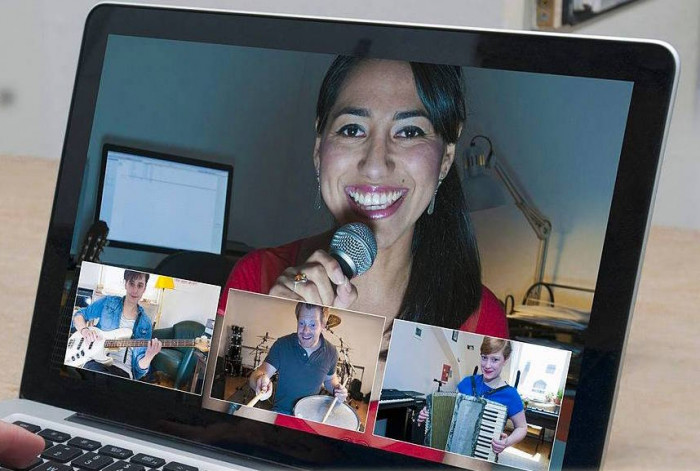
Webinars have become an increasingly popular method of delivering information, connecting with audiences, and conducting business. With the rise of remote work and the need for virtual events, webinars have proven to be a valuable tool for organizations and individuals alike. As the webinar landscape continues to evolve, it's important to stay ahead of the curve and understand the latest innovations and trends in the space.
In this article, we'll explore some of the key advancements shaping the future of webinars and how they can be leveraged to maximize their impact.
Key Advancements in the Field of Webinar
Artificial Intelligence and Machine Learning
Artificial Intelligence (AI) and Machine Learning (ML) are revolutionizing the webinar space, providing new and exciting ways to engage and interact with attendees. One of the biggest innovations in this area is the integration of interactive chatbots. These AI-powered tools can help attendees navigate the event, answer questions, and receive personalized recommendations based on their interests. By offering a more seamless and personalized experience, chatbots can increase engagement and provide valuable data for event organizers.
Another application of AI in webinars is the use of personalized recommendations. Using machine learning algorithms, event organizers can provide attendees with customized content recommendations based on their previous interactions and interests. This can help keep attendees engaged and ensure they get the most out of the event.
Virtual and Augmented Reality
Virtual Reality (VR) and Augmented Reality (AR) are also making a big impact in the webinar space. These technologies offer a more immersive and interactive experience for attendees, providing a level of engagement that is simply not possible with traditional webinars.
One potential application of VR and AR in webinars is in virtual trade shows. By using VR and AR, attendees can experience a trade show as if they were actually there, including visiting virtual booths and attending virtual demonstrations. This can provide a cost-effective alternative for companies looking to showcase their products and reach a wider audience.
In addition to trade shows, VR and AR can also be used for immersive educational experiences. This includes virtual field trips, product demonstrations, and interactive simulations. By providing a more engaging and interactive experience, VR and AR have the potential to revolutionize the way information is delivered in webinars.
Interactive Content and Gamification
One of the key trends in the webinar space is the incorporation of interactive elements such as quizzes, polls, and gamified challenges. This can help to increase engagement and provide valuable data for event organizers. For attendees, interactive content can create a more memorable experience and encourage participation.
Gamification, in particular, is a powerful tool for engaging audiences. By incorporating elements of play and competition into webinars, attendees are more likely to stay focused and participate. Achieve increased engagement through challenges, leaderboards, and rewards. Gamification not only increases engagement, but it also provides event organizers with valuable data to see which elements of the event resonate with attendees and what can be improved.
Mobile Optimization
As more people access virtual events on their smartphones and tablets, the importance of mobile optimization cannot be overstated. Ensuring that webinars are mobile-friendly and offer a smooth and seamless experience is crucial in order to engage and retain attendees. This includes optimizing the webinar platform for mobile devices, providing clear and concise navigation, and ensuring that content is easily viewable on smaller screens.
Best practices for mobile optimization in webinars include using responsive design, providing clear and concise navigation, and optimizing video playback for smaller screens. Additionally, it's important to ensure that all interactive elements, such as quizzes and polls, are easily accessible on mobile devices. This will help to ensure that attendees can fully engage with the webinar content, regardless of whether they're accessing it from a desktop computer or a mobile device.
In order to provide the best possible experience for mobile users, it's also important to consider the unique challenges that come with accessing webinars on smaller screens. This may involve adjusting the layout and formatting of presentations, or providing alternative methods of accessing and interacting with content, such as touch-based navigation or voice commands.
By prioritizing mobile optimization in webinars, event organizers can reach a broader audience and improve overall engagement. Optimize webinars for mobile devices to keep up with the changing landscape of virtual events as more and more people rely on their mobile devices for both work and leisure.
The Rise of Hybrid Events
Hybrid events offer benefits, including a broader reach, greater flexibility, and increased accessibility. They are popular for connecting with a wider audience.
One of the key benefits of hybrid events is increased accessibility. By incorporating virtual elements into in-person events, organizations can reach attendees who may not have been able to attend in person due to geography, time constraints, or other factors. This can help increase the overall reach and impact of an event and provide a more inclusive experience for attendees.
In addition to increased accessibility, hybrid events can also offer cost savings for event organizers. By reducing the need for attendees to travel, organizations can save on expenses such as transportation, accommodations, and food and beverage. This can make it more affordable to host large events and reach a wider audience.
Finally, hybrid events offer greater flexibility, allowing organizations to adapt to the ever-changing needs of attendees and the event landscape. For example, if unforeseen circumstances necessitate canceling an in-person event, transition it with ease to a virtual event. This can help to ensure that the event continues to have the desired impact, even in challenging situations.
Conclusion
Shape the future of webinars with innovative technologies and trends, including AI, VR/AR, interactive content and gamification, mobile optimization, and hybrid events. Stay ahead of the curve and maximize the impact of virtual events by adapting to the evolving webinar landscape. Embrace innovation and improve virtual events to ensure relevance and impact.
Stay informed about webinar trends and technologies to maximize impact and relevance. Embrace innovation and continually improve virtual event experiences.











